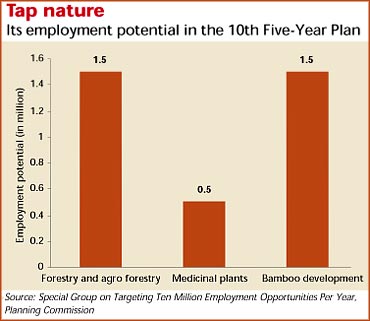At which road head?
At which road head?

There is one strong view in the job-business: more growth will lead to more jobs. We have to invest in only economic growth and not in employment creation programmes and other sectors. This is what the NDA-created Ahluwalia Task Force had maintained then. It would not be surprising if Ahluwalia, now in his UPA avatar, would continue to take this view. The task force had forcefully argued that a shift from 6.5 per cent to 8 per cent growth would generate an additional employment of 14.5 million by 2012. "In contrast,' the report said, "the total volume of employment created by all special employment programmes put together is only 4.4 million and this level has actually declined over time.'
Interestingly, the Ahluwalia committee also trashed the UPA government's plan for additional employment generation arguing that, "because of severe resource constraints, it is unlikely that the volume of employment provided by special employment programme can be increased significantly in future.'
This report therefore, emphasised on the macro-level policies needed for rapid growth. It pushed for higher rates of investment, improvements in efficiencies, improvement in infrastructure, reforms in the financial system and credit for the informal sector. But the stress was broadly on doing more of what is being done currently to accelerate economic growth. Jobs, they all argue, will come as a bonus.
Similarly, in the field of agriculture, the attempt should be to increase its efficiencies by bringing in private capital and public-private partnerships. For instance, the Ahluwalia task force recommends that leasing of land should be liberalised (read made easy for private interests to garner land); degraded wastelands can be taken out of the purview of tenancy laws and agro-companies allowed to buy, develop, cultivate and sell this land. Therefore, in its view the growth model for agriculture is the same as the industrial sector







